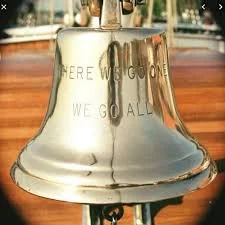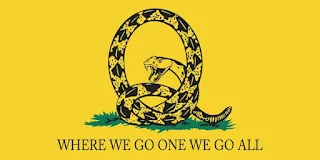Inventing South East Asia (Documentary; 2016)
Written and Presented by Dr Farish Noor

It is always interesting to listen to or read Dr Farish Noor's rendition of history as we were never taught. In this documentary series, he dons khakis and ventures deep into the heart of South East Asia. He tells us how the colonialist masters carved out boundaries amongst the borderless Malay archipelago to invent race, identity, cause destruction and pillage, all in the name of bringing 'modernisation' to the 'primitive' natives. What they did not realise or refuse to admit is that the area that they thought were doing a great humanity service, already had a stable civilisation and were already cultured in their own way. They created a smokescreen to do their job, to pilfer enormous wealth and precious natural resources.
#1.
Conquerors and Merchants
We are seldom told of the British invasion of Indonesia. In fact, they had interfered in Indonesia's affairs twice, albeit a short while, once after the Napoleonic wars and after WW2.
Capt Gillespie and an unknown officer Stamford Raffles invaded Java and destroyed the Jogjakarta Sultanate. Raffles then reinvented himself as a curator of conservation of the traditional Java relics to self-promote himself. His promotion of Java as an entity gives them their identity. Some old Javanese are still sore with the British till this day for their carnage. However, they are also eternally grateful to Raffles and his men for rediscovering Borobudur and the Javanese heritage.
Jambi City, Sumatra, where the Malay language is said to have originated had an illustrious Hindu-Buddhist past. In the 19th century, John Anderson, a British merchant was sent by the East Indian Company to explore Jambi which was fabled to be filled with cannibals and pirates. He was pleasantly surprised with the hive of trades happening there and the hard-working and friendly people selling a myriad of exotic produce. His book which showcased the rich natural resources there lured the Dutch to reap its natural resources and denude the greenery leading to various environmental damage. Commerce which was supposed to improve the general livelihood of people of Indonesia failed to do so. Wealth just changed hands from one master to another. For the poor, it is just business as usual.
#2. Kings and Pirates
In the second episode, Associate Prof Farish Noor travels to Borneo to discuss the shadow-play of the British in the island to justify their actions of gaining power to bring law and order. As is well known, in the 19th Century there was a blurred line between piracy and privateering. When done by the British against their enemies it was privateering, and it was legitimate and rewarded at the highest level. Sir Walter Raleigh was one such character. His actions, in reality, were no different than that of a pirate.

James Brooke was a soldier in the Anglo-Burmese war, but he ventured to the exotic Borneo Island for adventure and excitement. He came here, not as a representative of the East Indian Company or of the British Government but on his own accord. By a twist of fate, when he arrived in Sarawak in 1839, there was a local outbreak between Muda Hashim, a relative of the Brunei royalty, and some rebels. In return for helping Muda Hashim, Brooke was rewarded a piece of land. In the pretext of controlling piracy, he expanded his control over the rest of Sarawak and appointed himself as the White Rajah of Sarawak. He justified his nefarious actions
of killing natives indiscriminately by concocting stories of pirates and headhunters as the bogeymen.
He also attacked Kampong Ayer, Brunei's busiest port and centre of commerce, with his comrades, Mundy and Keppel. They pointed a cannon at the Sultan's palace and arm-twisted him to give Labuan to the British. All in the name of combating piracy and to make commerce safe but for whom?
The community in Sabah has always been varied, complex and mobile. The whole landscape was fluid, borderless, porous and people, especially boat people (Bajau Laut) were a nomadic lot. The British conveniently labelled them as pirates to legitimise their treacherous actions.
#3. Shadow of the Guillotine
 |
| Louis Delaporte |
It all started with the French wanting to compete with the British Raj to find an alternative route to China. Louis Delaporte, an explorer-artist, led an expedition up Mekong River in a failed mission. What he found was gems of ruins of ancient archaeological finds of Angkor Wat. Being the artist that he is, he returned with realistic and colourful drawings of an abandoned but advanced civilisation.
To be fair, Delaporte had very high regards to the Khmer culture. He viewed the Indo-Chinese as descendants of an advanced race. His country, however, did not want to hear any of that. As far as they were concerned, a race that had forgotten its roots is lost. The ruins denote that the Asian Civilisation is on the decline, and the French took it as their moral duty to educate and bring culture (modernisation) to the natives, correct this fall from grace while looting of its treasures. They created French Indo-China.
 |
Khmer sculpture on display at l'Exposition
Universelle de 1878, an engraving
by Louis Delaporte |
They brought French culture wholesale into Indochina. Colonisation is not just limited to canons and military might. Colonisation also encompasses control of the mind, thinking and faith. Catholicism crept in. Students were educated in Paris. The advanced culture of the South East Asians went on a decline.
European education also brought in nationalism in the form of Ho Chi Min and Pol Pot. Both of them were members of the French Marxist Party.
Independence did not bring freedom but was fraught with wars, terror and genocide. The Vietnamese and the Cambodians have all got heart-wrenching stories of war, loss of loved ones and torture. Ironically, memories of these atrocities draw visitors to their land to dwell a bit of torture porn in the War Museums, Genocide Museum and Killing Fields.
The narrator ends the series with the message for us to question the myths of the past and live beyond the long shadow of our 19th century colonial past.





























